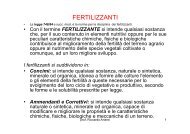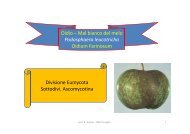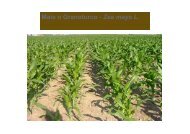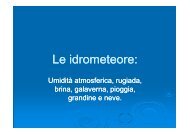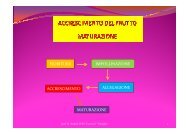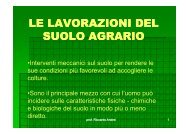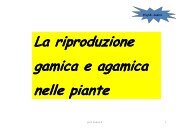MELO seconda parte.pdf - prof. R. Andrei - appunti di agraria
MELO seconda parte.pdf - prof. R. Andrei - appunti di agraria
MELO seconda parte.pdf - prof. R. Andrei - appunti di agraria
You also want an ePaper? Increase the reach of your titles
YUMPU automatically turns print PDFs into web optimized ePapers that Google loves.
ASSE COLONNARE<br />
Forma sperimentale che ha interessato i ricercatori <strong>di</strong> East-<br />
Malling, con sesti sulla fila <strong>di</strong> 1 m e <strong>di</strong>stanze fra le file 4.0-4.5<br />
Costituita da un fusto centrale sprovvisto <strong>di</strong> branche permanenti,<br />
ma solo branchette fruttifere laterali, le quali vengono<br />
rinnovate a partire dal 4°anno asportandole in misu ra del<br />
30% l’anno.<br />
POTATURA DI PRODUZIONE<br />
Non esistono regole fisse <strong>di</strong> potatura valide in tutti gli ambienti: si<br />
deve mirare al buon equilibrio tra attività vegetativa –<br />
riproduttiva.<br />
Per eseguire una corretta potatura bisogna sapere dove produce<br />
il melo:lamburde, rami misti, brin<strong>di</strong>lli.<br />
Nelle cultivar standard con la potatura si dovranno <strong>di</strong>radare le<br />
formazioni fruttifere, quelle più vecchie. Nelle cv. Spur la<br />
potatura è più semplice: <strong>di</strong>radamento delle branchette ogni<br />
3/4 anni.<br />
Il rinnovo delle lamburde è importante anche ai fini qualitativi:



